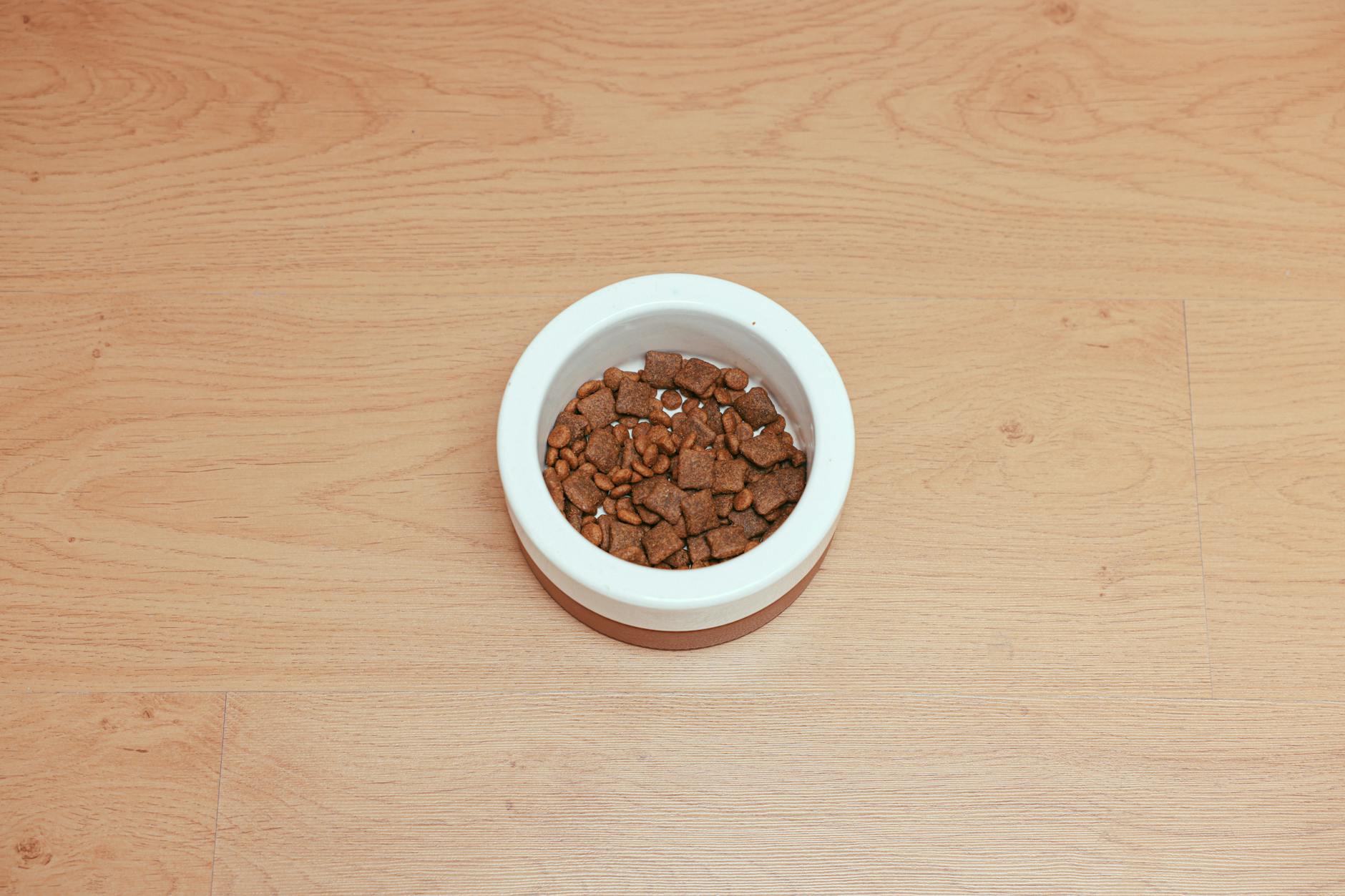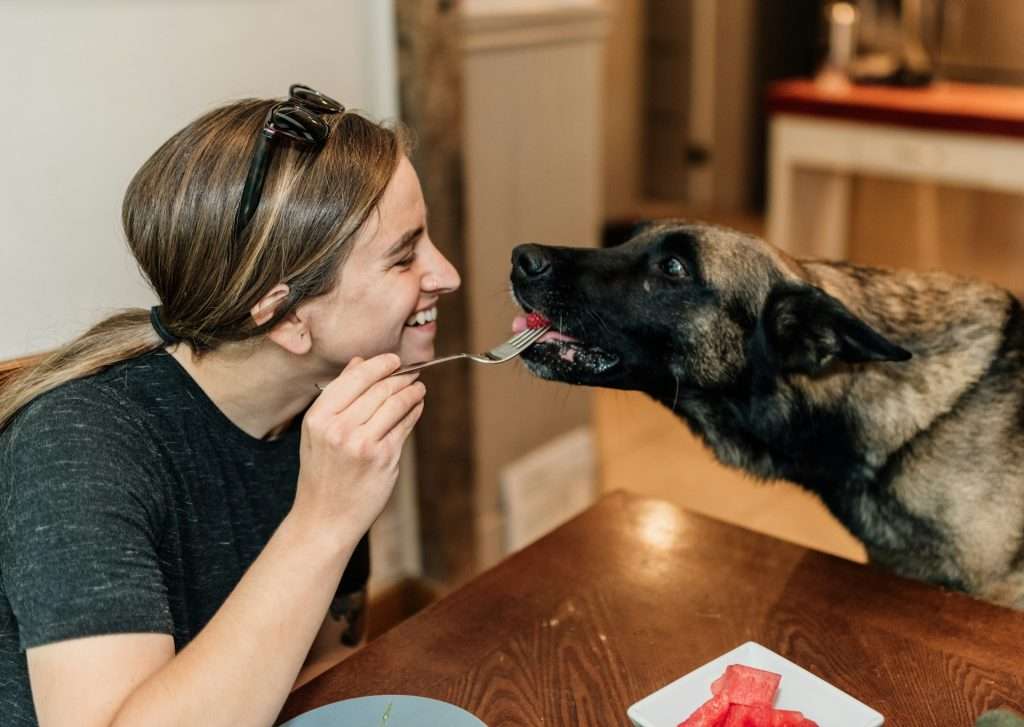Homemade Dog Meal Recipes: Healthy, Easy, and Delicious Options

Homemade Dog Meal Recipes. Cooking your dog’s meals at home offers control, affordability, and plenty of health perks. Homemade recipes let you skip questionable fillers and ensure your furry friend gets only wholesome ingredients.
You’ll also save money while catering to your dog’s dietary needs and preferences. If you’re looking for inspiration, explore more ideas, like this dog cake recipe to treat your pup with love and care. Ready to give your dog the gift of better nutrition? Let’s get started!
Table of Contents
Understanding Dog Nutrition
Understanding proper nutrition is key to fueling your dog’s health and happiness. A balanced diet keeps your pup energetic and wards off avoidable health issues. But what do dogs genuinely need, and how do their dietary requirements differ by breed? Let’s break it down.

Photo by Cup of Couple
Key Nutrients for Dogs
Just like us, dogs thrive on a variety of essential nutrients. Providing these in the correct amounts is crucial to their well-being. Here’s what your furry friend needs:
Protein: This is the foundation of a dog’s diet. Proteins promote muscle growth and repair while keeping your dog strong. Sources include chicken, beef, fish, and eggs.
Fats: Healthy fats provide energy and help maintain a shiny coat and good skin health. Omega-3 and Omega-6 fatty acids are essential in fish oil and flaxseed.
Carbohydrates: Carbs fuel your dog’s energy levels, especially for breeds known for their agility. Brown rice, sweet potatoes, and oats are excellent choices.
Vitamins and Minerals: These micronutrients support everything from immunity to bone health. For example, Vitamin D aids calcium absorption, while magnesium ensures proper nerve function.
Water: While it’s not a nutrient in the traditional sense, hydration is critical. Always provide fresh, clean water alongside meals.
Check out this detailed guide for a deeper dive into how these nutrients shape your dog’s health.
Common Nutritional Needs by Breed
Did you know dietary needs can vary by breed? While all dogs require balanced meals, some breeds have unique needs. Here’s an overview:
- Small breeds (e.g., Chihuahuas): These pups have high metabolisms and may need calorie-dense foods.
- Large breeds (e.g., German Shepherds) need diets rich in calcium to support joint and bone strength.
- Active breeds (e.g., Border Collies): More protein and carbs are necessary to fuel their endless energy.
- Certain breeds prone to allergies (e.g., Bulldogs) may require limited-ingredient diets to prevent allergic reactions.
If you’re curious about breed-specific dietary advice, explore more insights in Dog Nutrition Guidelines.
Understanding these essentials sets the stage for creating delicious and nutritious homemade meals tailored to your dog’s needs.
Benefits of Homemade Dog Meals
Cooking for your dog isn’t just an act of love; it’s a step toward better health, savings, and peace of mind. Homemade dog meals give you complete control over what goes into your dog’s food bowl, bypassing potential additives and allergens lurking in commercial dog food. They’re surprisingly budget-friendly and bring numerous health perks for your furry friend.
Control Over Ingredients
When you make your dog’s meals, you’re in charge. This means avoiding unnecessary fillers, preservatives, and other potentially unhealthy additives often in commercial dog food. Have you ever read the back of a dog food bag and been baffled by unpronounceable ingredients? With homemade meals, you use fresh, whole foods—foods you’d feel good feeding every family member.
For dogs with allergies, this is especially helpful. You can tailor meals to avoid common allergens like grains, chicken, or artificial flavorings. Doing so creates an allergen-free dining experience that can drastically improve your dog’s overall comfort. Curious about how this works? The American Kennel Club explains more about homemade fresh dog food benefits and how it can help.
Cost Efficiency
At first glance, cooking for your dog might seem expensive, but it can save you money over time. Imagine this: instead of buying premium commercial brands, which often charge extra for the ‘all-natural’ label, you can shop for wholesome ingredients yourself.
For example:
- Bulk ingredients: Buying chicken, rice, and vegetables in large quantities is economical.
- Fewer vet visits: A healthier diet now means fewer potential health issues later, translating to long-term savings.
Many pet parents have found that homemade meals cost far less per serving than high-end kibble. Want examples? Check out this homemade meal guide for picky eaters to get started with low-cost yet nutritious meal ideas.
Health Benefits
By feeding your dog homemade meals, you can improve their health and quality of life. Store-bought dog foods often contain fillers that provide little to no nutritional value. Homemade meals, on the other hand, are nutrient-dense and balanced to meet your dog’s specific needs.
These meals:
- Support shiny coats and healthy skin.
- Boost energy levels, especially in active breeds.
- Aid digestion, reducing tummy troubles caused by low-quality fillers.
- Address specific health goals such as weight management or allergy prevention.
Customizing meals like this ensures your dog’s diet works for them, not against them. For more insights into the science behind this, look at the science-backed benefits of home cooking for your dog.
Crafting meals personalized to your pup helps them thrive now and in the long run!
Easy Homemade Dog Meal Recipes
Feeding your dog homemade meals is simpler than you think. You can create nutritious dishes tailored to your dog’s tastes and needs with just a few staple ingredients and minimal preparation. These easy recipes provide a great way to boost your dog’s health and give them meals they’ll love.
Chicken and Rice Recipe
This classic meal is gentle on your dog’s stomach and packed with protein and carbs. Perfect for pups with sensitive digestion.
Ingredients:
- 2 cups cooked white rice
- 1 pound shredded, boiled chicken breast (no seasoning)
- 1 cup finely chopped carrots (steamed)
- Optional: 1 tablespoon olive oil for shine
Steps:
- Boil chicken breast until fully cooked and shred it into bite-sized pieces.
- Steam the carrots until soft and chop them into small, chewable pieces.
- Mix cooked rice, chicken, carrots, and olive oil in a bowl.
- Let it cool before serving it to your pup.
Beef and Vegetable Stew
A hearty and filling stew rich in nutrients, perfect for active dogs.
Ingredients:
- 1 pound lean ground beef
- 1 cup diced sweet potato
- 1 cup green beans (chopped)
- ½ cup carrots (sliced)
- 2 cups water
Steps:
- Cook the ground beef in a large skillet or pot until thoroughly browned.
- Add diced vegetables and water to the meat.
- Cover and simmer on low heat for 20 minutes or until veggies are tender.
- Cool to room temperature and serve.

Photo by Katerina Holmes
Fish and Sweet Potato Dish
For dogs with allergies or in need of more omega-3s, this dish is a winner.
Ingredients:
- 1 pound skinless white fish (like cod or tilapia)
- 1 medium sweet potato (boiled and mashed)
- 1 tablespoon fish oil or olive oil (optional)
Steps:
- Bake the fish at 350°F for 10-15 minutes until fully cooked. Remove bones if any.
- Boil and mash the sweet potato until smooth.
- Combine fish and sweet potatoes in a bowl, adding oil for extra healthy fats if needed.
- Stir and serve once cooled.
Egg and Spinach Scramble
A quick breakfast option that’s great for energy and healthy coats.
Ingredients:
- 2 eggs
- ½ cup baby spinach (chopped)
- 1 teaspoon olive oil
Steps:
- Heat olive oil in a non-stick pan.
- Scramble eggs and toss in chopped spinach midway through cooking.
- Stir until eggs are fully cooked and spinach is wilted.
- Cool and serve.
Homemade Dog Treats
These easy treats are a fun bonus to pair with your dog’s meals.
Ingredients:
- 2 cups whole wheat flour
- ½ cup unsweetened peanut butter (check labels for xylitol)
- 1 cup unsweetened applesauce
Steps:
- Preheat the oven to 350°F.
- Mix all ingredients in a bowl until it forms a thick dough.
- Roll out the dough and use cookie cutters to shape treats.
- Bake for 15 minutes or until slightly golden. Cool before giving them to your dog.
For more cost-friendly and nutritious homemade meal ideas, explore Best Dog Food for Picky Eaters.
Feel inspired? These recipes offer a healthy alternative to store-bought meals while putting a smile on your dog’s face at mealtime.
Tips for Making Homemade Dog Food
Preparing homemade meals for your dog can be a rewarding way to ensure they stay healthy and happy. However, it’s essential to approach this thoughtfully. From consulting your vet to balancing their meals, let’s discuss tips to ensure everything is safe, nutritious, and enjoyable for your furry friend.
Consulting with a Veterinarian
It’s tempting to make your dog’s meals without guidance, but this can lead to nutritional gaps. Dogs have specific dietary needs, and feeding them incorrectly could result in serious health issues over time. Always consult your veterinarian before introducing homemade meals to your dog’s diet. They can evaluate your dog’s unique health requirements, advise on portion sizes, and recommend supplements if needed.
Some vets also support using high-quality recipes. You can find balanced options in sources like Homemade Dog Food Recipes: Choosing Balanced Ingredients.
Storage and Safety Tips
Safe storage is just as necessary as the recipe itself. Improper storage can lead to spoilage, which is harmful for dogs. Here’s how to keep homemade food fresh:
- Refrigeration: Store meals in airtight containers and refrigerate them immediately. They typically last 3-5 days in the fridge.
- Freezing: Make meals in bulk and freeze portions. Most meals can last up to three months when frozen.
- Thorough Cooking: Always fully cook proteins like chicken or beef to avoid bacteria like salmonella.
- Hygiene: Wash your hands, utensils, and surfaces thoroughly before and after meal prep.
Planning to make batches of food? Check out this helpful Homemade Dog Food Super Guide for tips on preparing and freezing large portions.
Balancing Homemade Meals
Dogs require various nutrients to thrive: protein, fats, vitamins, minerals, and carbohydrates. Ensuring your homemade recipes meet those needs is critical. Here are some balancing tips:
- Use diverse protein sources: Include lean meats like turkey, chicken, or fish to cover amino acid needs.
- Add healthy carbs and grains: Brown rice, quinoa, or sweet potatoes are great options.
- Don’t skip vegetables: Carrots, spinach, and broccoli provide essential vitamins and fiber.
- Incorporate fats: Fish oil or flaxseed aids in maintaining a shiny coat and healthy skin.
- Use supplements: Calcium and other vitamins may need supplementation that food alone can’t provide.
An excellent resource for ensuring meals are nutritionally sound is the Homemade Dog Food Guide.

Photo by Nastya Korenkova
Feeding your dog homemade meals offers many benefits, but ensuring they are balanced, safe, and tailored to their needs is crucial.
Conclusion: Sharing and Inspiring the Homemade Dog Meal Journey
Making homemade meals for your dog is more than just cooking; it’s an act of care and connection that offers endless possibilities. Whether starting with straightforward recipes or diving into more elaborate creations, you’re contributing to your pup’s health and happiness. Plus, the journey becomes even more decadent when shared with others.
Call to Action: Prompt Readers to Share Their Homemade Recipes and Experiences
Have you created a recipe that your dog can’t resist? We’d love to hear about it! Share your favorite meals, tips, or even those funny moments in the kitchen when your pup couldn’t wait to taste-test. By exchanging ideas and experiences, we can make mealtimes even more special for our furry friends.
- Drop a recipe: Got a unique recipe? Please share it in the comments!
- Ask for advice: If unsure about an ingredient or method, get insights from other readers or our community.
- Celebrate with pictures: Show off your homemade meal creations and your dog’s happy reactions.
For more inspiration, check out our guide to improving mealtimes with personalized options in articles like Best Dog Food for Cavapoos. Let’s inspire each other to take homemade dog meals to the next level!

Photo by Kampus Production
For additional dog meal tips and tricks, learn the dos and don’ts of cooking for your dog to ensure every meal is a nutritious delight.
Frequently Asked Questions About Homemade Dog Meal Recipes
What ingredients should I use for homemade dog meals?
Lean meats (like turkey or chicken), brown rice, sweet potatoes, carrots, spinach, and eggs are excellent choices. Always consult with your vet for specific dietary needs.
Can I include grains in my dog’s meals?
Yes, grains like rice and oatmeal can provide necessary carbohydrates. However, some dogs are sensitive to grains, so monitor for any negative reactions.
Are there ingredients I should avoid?
Avoid onions, garlic, chocolate, grapes, raisins, avocados, macadamia nuts, and anything with artificial sweeteners like xylitol. These are toxic for dogs.
How much homemade food should I feed my dog?
The amount depends on your dog’s size, breed, and activity level. A standard guideline is 2-3% of their body weight per day, split into two meals.
Do I need to balance homemade dog food?
Absolutely. A balanced meal includes protein, healthy fats, carbohydrates, fiber, vitamins, and minerals. Adding a vet-approved supplement might be necessary.
Can I freeze homemade dog food?
Yes, most homemade dog foods freeze well. Store in airtight containers or freezer bags, and thaw portions as needed.
Should I rotate ingredients in my dog’s diet?
Rotating proteins, grains, and vegetables helps ensure your dog gets various nutrients. Introduce new ingredients gradually.
Is homemade food suitable for puppies?
Puppies need specific nutrients for growth. Their meals should be carefully planned with guidance from a vet or canine nutritionist.
How do I know if my dog is thriving on homemade food?
Look for indicators like a shiny coat, normal stools, good energy levels, and a healthy weight. Any concerns? Consult your vet.
How long does homemade dog food last in the fridge?
Store it in an airtight container in the fridge for 3-4 days. Freeze for more extended storage.
Do I need to include supplements in homemade meals?
Homemade diets often lack certain nutrients. Calcium and omega-3 fatty acids are common additions but always discuss supplements with your vet.
Can I feed my dog raw food instead of cooked?
Raw diets can work for some dogs, but they have potential risks like bacterial contamination. Discuss with your vet before switching.
Are vegetables necessary in homemade recipes?
Yes, vegetables like broccoli, carrots, zucchini, and spinach provide essential vitamins, nutrients, and fiber for your dog’s health.
How do I transition my dog to homemade meals?
Start by mixing 25% homemade food with 75% regular food. Gradually increase homemade portions over a week.
Can I use seasoning in my dog’s food?
Avoid salt, pepper, and spices. Stick to dog-friendly herbs like rosemary for flavor if needed.
Is homemade meal preparation expensive?
Costs vary depending on the ingredients. It can be affordable with proper planning, especially compared to high-end commercial dog food.
Where can I find reliable homemade dog food recipes?
Check resources like the American Kennel Club’s guide, vet-approved cookbooks, or reputable websites like AllRecipes and DamnDelicious.
Conclusion
Homemade dog meals combine simplicity, control, and care to support your pup’s health. By preparing tailored recipes, you ensure they receive fresh, high-quality nutrition without unnecessary fillers or allergens.
As you embark on this culinary journey, always prioritize balance and safety. Consult your vet, try new recipes, and adjust based on your dog’s preferences and needs. Sharing your experiences can inspire others, too.
For more ideas and guidance on your dog’s nutritional needs, explore Nutrition Tips to keep their meals exciting and beneficial. This step transforms mealtime into a meaningful, shared experience that benefits your dog’s well-being for years.







5 Comments